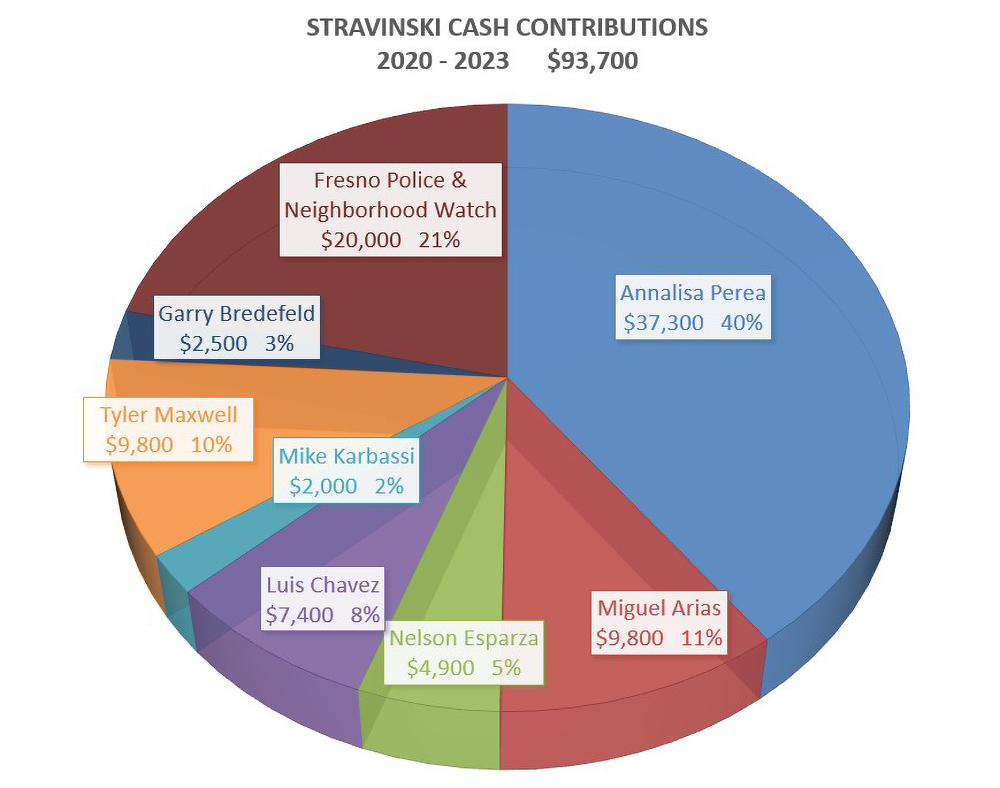
Fans of the composer Igor Stravinsky might find his modernist work The Rite of Spring a suitable soundtrack for the story of Peter Stravinski the developer, particularly its “Sacrificial Dance” (bonus: soundtrack!) section. The dissonant music and pounding rhythms assault the senses like diesel exhaust and the surging roar of trucks of every kind—impacts Stravinski appears willing to see increase.
And our City Hall orchestra of mayor, city council, planning commission and staff is playing right along. As reported in the June 2021 issue of Community Alliance, Stravinski seeks to upzone 90 acres along Elm Avenue from mixed use to the more valuable designation of light industrial, its previous, warehouse-compatible status prior to adoption of the Southwest Fresno Specific Plan in 2017.
Fortunately for residents, three years ago the wrong conductor stepped forward to wave the baton: High-Speed Rail Authority board member and former Fresno City Council member Henry R. Perea. Assuming a ritual sacrifice would be performed, Perea, a City-registered lobbyist at the time, tried but failed to push through a classic Fresno, ignore-the-public rezone, the kind he used to vote for.
Rather than having advised Stravinski to spread his campaign donations among the orchestra’s first chairs, Perea instead had the Madera-based builder of warehouses channel $27,500 into daughter Annalisa Perea’s 2022 campaign for the District 3 seat, including $4,000 funneled through the Fresno County Young Democrats.

That having failed, the pattern shifted in 2022, the year Stravinski succeeded in getting a third of the property rezoned to industrial, including for its largest pollution source: Mid Valley Disposal. The October vote was preceded by $22,500 in campaign contributions to City Council members. Miguel Arias and Nelson Esparza scored first in January of last year with checks for $4,900 each. Luis Chavez picked up his $4,900 a few weeks later.
The mayor came next, but Jerry Dyer enjoys an abundance of campaign riches and dearth of challengers, so one of his favorite public relations campaigns—the rebranded “Fresno Police and Neighborhood Watch”—received checks for $9,000 in May and $11,000 in June (candidate development, anyone?). In August, Arias picked up another $4,900 to match Perea’s $9,800 for the year.
Skids greased, the 30-acre rezone was unanimously approved in October by the City Council over community objections. Following the vote, according to Fresnoland, residents were not pleased.
“The Council decision is not a compromise for our community,” said Robert Mitchell, co-chair of the Golden West Side Planning Committee and a southwest Fresno resident. “[Arias] completely went against the wishes of his constituents who have spoken vehemently in opposition to it.”
With 30 acres rezoned, the Stravinski ballet was now well under way with Arias conducting. Rewards were soon being distributed like holiday bonuses. In December, Mike Karbassi received $2,000; Tyler Maxwell got the maximum $4,900; and Annalisa Perea topped them both with $9,800 thanks to checks from two Stravinski family members, Peter and Kimberly.
Now the orchestra wants to rezone the remaining 60 acres. In May 2023, City Attorney Andrew Janz was directed to research their options, according to Fresnoland, and the money is flowing once again. That same month Chavez and Garry Bredefeld scored $2,500 contributions to their respective campaigns for county supervisor. More is expected, no doubt.
Up to nearly $100,000 so far in contributions to politicians and the mayor’s proxy, Stravinski is at last receiving the deferential treatment from City Hall that developers have so long enjoyed in Fresno. Arias and Perea are mouthing pro-rezone talking points, including vacuous promises of going “clean and green” and going so far as to claim that in order to reduce greenhouse gases, ground level air pollution will have to increase. One assumes electric vehicles would pollute less, not more.
Clearly, these fiddlers are not only willing to take the most pressing issue of our time and exploit it for short-term political gain, they’re cynically playing it off the air pollution crisis that’s taking decades off the lives of their constituents. And they’re not alone. Politicians at every level of government are doing the same thing, particularly Democrats trying to engage on the issue.
Contrary to the common complaint that no action has been taken to address the climate crisis, much has been done, most of it wrong. Lobbyists—such as son, brother, former office holder and Chevron frontman Henry T. Perea—have been hard at work on climate policy for more than 20 years in Sacramento, longer in Washington, D.C. Their “solutions” are market-based systems for trading pollution credits. In politics it’s called “pay to play,” so the familiar logic resonates with politicians.
Because the summer of 2023 is being hailed as the period where enough people have finally clued to our Pyrocene predicament to act, the public is being inundated with a barrage of climate change fallacies and net-zero false promises. The politicians charged with crafting realistic responses are not up to the task, due mostly to their blind faith in the old ways.
Just before Rite of Spring ends in the “Sacrificial Dance,” Stravinsky gives us “Ritual Action of the Ancestors.” A young girl, selected by fate, is entrusted to the care of old wisemen, who then have her dance to death as a sacrifice to their gods.
The outcomes of Fresno’s rites are similarly drawn, determined by developers’ land-use rights and politicians’ adherence to past practice, led there by elders. As the climate’s unraveling gathers speed, if we fail to prioritize protective measures now, more and more people of every age will be sacrificed to appease the gods of greed and ambition.
